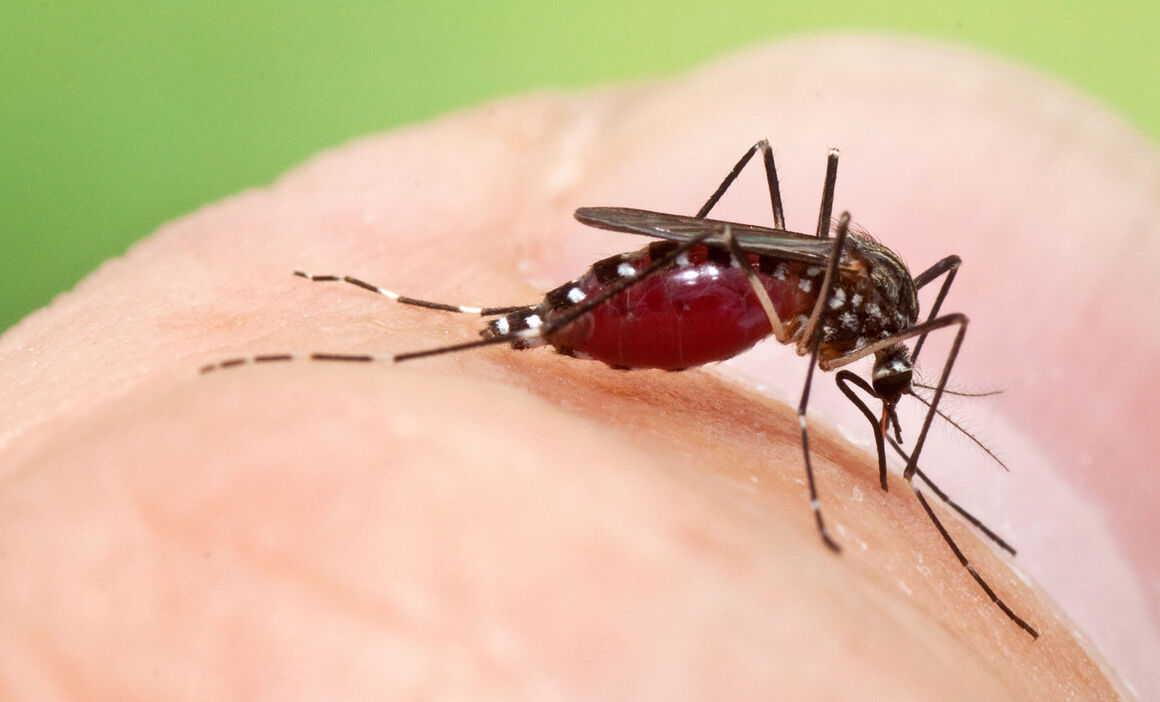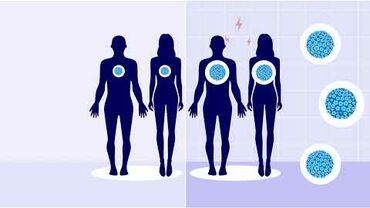Aedes koreicus - Factsheet for experts

SPECIES NAME/CLASSIFICATION: Aedes koreicus (Edwards)
COMMON NAMES: none
SYNONYMS AND OTHER NAMES IN USE: Ochlerotatus koreicus [13], Hulecoeteomyia koreica [14]
Hazard associated with mosquito species
Current issues
Invasive species/global dispersion
Aedes koreicus was recently found established in a small area of eastern Belgium although it does not seem to be spreading. This was the first report of the species outside its native region in Korea [1] and the first worldwide report of the species arriving in a new area. The species has also recently been reported in Veneto province, Italy [2] but further surveillance is needed to assess the spread of the species in Italy.
Ecological plasticity
As with other Aedes species, Aedes koreicus seems well adapted to surviving human-induced transport over long distances, winter temperatures in northern Europe and organic-rich, artificial and semi-natural containers [1]. Much like Aedes albopictus, this species can exploit urban habitats and is reported to be more tolerant of cold temperatures [2].
Biting and disease risk
In parts of Russia Aedes koreicus has been proven to be a vector for Japanese encephalitis virus [3, 4] but this has never been reported from the field in Korea [5]. There are indications that the species could be able to transmit Dirofilaria immitis to dogs [6] and Brugia malayi to humans [7]. Aedes koreicus can be found more in human-inhabited areas compared to Aedes japonicus, and the species is known to bite humans [8] during daytime [9], increasing the potential contact with humans.
Geographical distribution
Aedes koreicus has been reported in Belgium, China, Japan, Italy, Republic of Korea (South Korea) and Russia.
Brief history of spread and distribution in Europe
Pathways
Aedes koreicus is endemic to Japan, north-eastern China, the Republic of Korea (South Korea) and parts of Russia [8]. In the Republic of Korea (South Korea) the species has frequently been found in the northern regions [10] and on the island of Gyeongsangbuk-Do [11], but also on the island of Jeju-Do in the south [8].
Timeline of initial movement
Nothing is known of how the species was initially introduced into Belgium/Europe. The species was reported in Italy in 2011 during surveillance for Aedes albopictus. Surveillance was carried out in the same municipality during 2009 and 2010 but Aedes koreicus was not detected at that time [2].
Initial importation and spread in Europe
The species was found for the first time in 2008 and was reported again in subsequent years from the same area in Belgium. Larvae and adults of Aedes koreicus were found within a 6km2 area, but the population was concentrated in an industrial zone at the initial reference site [1]. Entomological investigations into the recent establishment of this species in Belluno, Veneto province, Italy during 2011 also did not reveal introduction routes. This species has not yet been detected in the areas surrounding the initial site of detection [2]. Morphological identification of these specimens suggests that they are the form reported from Jeju-do Island, Korea (due to the presence of a basal pale band on hind tarsomere V). In both cases of establishment outside the native range, introduction routes for Aedes koreicus have not been identified, although international trade has been suggested as a possible route in Belgium [1].
Possible future expansion
Considering its strong ecological and genetic overlap with Aedes japonicus [12] and its ability to survive northern European winters and human-aided transport, the species may be introduced and establish in other European countries [2]. There is, however almost no information on the biology and activity of Aedes koreicus [2] and therefore it is impossible to predict future risk at this stage.
Entomology
- SPECIES NAME/CLASSIFICATION: Aedes koreicus (Edwards)
- COMMON NAMES: none
- SYNONYMS AND OTHER NAMES IN USE: Ochlerotatus koreicus [13], Hulecoeteomyia koreica [14]
Morphological characters and similar species
Adults of Aedes koreicus are relatively large and show a black and white pattern due to the presence of white scale patches on a black background on the legs and other parts of the body. They strongly resemble Aedes japonicus in that they also several have clear longitudinal lines on the scutum (dorsal part of the thorax), which is diagnostic for distinguishing between Aedes aegypti and Aedes albopictus. The main distinguishing feature between the two species is the presence of a complete basal band on hindtarsomere 4. Individuals of Aedes koreicus from Jeju-do Island, southwest of the Republic of Korea (South Korea) mainland, have a fifth hind tarsomere with an incomplete pale basal band which is not the case for the specimens from the mainland. This characteristic is present in all individuals within the Belgian population and those from Italy.
Life history (including details of overwintering stage)
Diapausing tendencies
Aedes koreicus overwinter as eggs and hatch during spring [2]. The species probably survive in the same manner as Aedes japonicus ‒ e.g. as freeze- and desiccation-resistant eggs that are dormant during winter and hatch once environmental conditions become more favourable. Larvae collected in early spring 2010 in local containers demonstrated the ability of the species to survive northern European winters [1]. In Italy, this species was found in Belluno, Veneto province, which extends from 305 to 2 149 metres above sea level, is characterised by a temperate climate, with cold and often snowy winters and mild warm summers [2].
Seasonal abundance
In the Republic of Korea (South Korea) adults of the species are found from May‒October, however nothing is known of larval presence in the species’ native range [5]. Aedes koreicus appears during the later part of spring as one of the earliest and most common mosquitoes in the Peiping area (China) [15]. In Belgium, adults are present from May‒October, with peak activity during the summer months. Larvae of the species can be observed earlier, from March/April till September [1]. Larvae were collected during May and July 2011 in Veneto, Italy [2].
Voltinism (generations per season)
Nothing is known of the number of generations the species has per season.
Host preferences (e.g. birds, mammals, humans)
Aedes koreicus is known to bite humans, farm animals [8] and domestic animals [2].
Aquatic/terrestrial habitats
Larvae of the species have been found breeding at a number of artificial sites, such as garden ponds, water drums and other water-containing vessels [15], and in natural sites such as tree holes and stone cavities containing rain water and decaying tree leaves [6]. Tanaka et al. [8] stated that the larvae of Aedes koreicus can be found more easily in areas inhabited by humans than the larvae of Aedes japonicus. In Belgium, immatures of Aedes koreicus were found at artificial sites (discarded tyres, old rusted construction equipment), as well as in more natural sites such as road tracks and ditches [1]; In Italy, larvae were found in manholes, a bucket in a private garden and flower pots in a cemetery. The bucket in the private garden was heavily infested and was said to be filled with clean water [2].
Biting/resting habits (endo/exophily, endo/exophagy, biting periodicity)
In the Republic of Korea (South Korea) the species is known to bite humans and farm animals [8] during the daytime [9]. Probably because of the low density of the species no complaints of nuisance were noted in Belgium [1]. This species is reported to bite humans both during the day and at night [2].
Environmental thresholds/constraints/development criteria
There is little information on possible thresholds that might limit the distribution of the species. Based on a comparison of climate likeness between the Republic of Korea (South Korea) and Belgium, climate seems not to be a limiting factor for the establishment of the species in the country [1] or other countries with a similar climate in Europe.
Epidemiology & transmission of pathogens
Known vector status (In field, experimental transmission)
So far in Belgium no vector role has been identified for the species, but in parts of Russia it is suspected to be a vector for Japanese encephalitis virus in the field [3, 4] . Although experimental transmission of Japanese encephalitis virus by this species has been reported in Russia, it has not been isolated from wild-caught mosquitoes in Korea [16]. Furthermore, Feng [6] reported that a population of Aedes koreicus from Peiping was experimentally proven to be an efficient transmitter of Dirofilaria immitis to dogs and a recent report by the Korean Centre for Disease Control [7] states it has intermediate vectorial capacity for transmission of Brugia malayi to humans. Yamada [17] found that this species can pick up microfilariae but do not allow the development of Wuchereria bancrofti.
Role as enzootic or bridge vector
Nothing is known of the feeding preferences of Aedes koreicus, although there are reports of blood meals being taken from cattle and humans [8].
Overview of clinical features of associated disease
The role of Aedes koreicus in the transmission of the above-mentioned viruses in natural conditions remains unclear.
Public health (control/interventions)
Surveillance
There is currently no specific surveillance action for the species. In Belgium, Aedes koreicus is being monitored through a temporary, nationwide mosquito surveillance project (MODIRISK). Specimens found in Italy were identified via routine surveillance for Aedes albopictus by the public health service, i.e. passive detection [2].
Appropriate sampling strategy (aquatic larval sampling, adult traps)
In its native region the species is trapped using CDC light traps, although large numbers are not caught [10]. In Belgium, the species was monitored using CO2-baited traps, BG Sentinels and John Hock gravid traps. However, the species is never caught in large numbers (Versteirt et al. 2012). This species was successfully detected using ovitraps set for Aedes albopictus in Italy [2].
Species-specific control methods e.g. insecticide, public health education, etc.
There is no specific guidance on control of this mosquito species in Belgium, although future action is currently being discussed. Aedes koreicus is not targeted for control within its native range. Personal protective measures to reduce the risk of mosquito bites include the use of mosquito bed nets (preferably insecticide-treated nets), sleeping or resting in screened or air-conditioned rooms, the wearing of clothes that cover most of the body, and the use of mosquito repellent in accordance with the instructions indicated on the product label.
Current nuisance biting/vector issues in Europe
No biting nuisance has been reported in Belgium or Italy so far.
Existing public health awareness and education materials
None.
Key areas of uncertainty
- Invasive status of this mosquito species is not clear, nor is the vectorial capacity.
- Species is probably able to colonise northern European territories. More information on import pathways, ecological niche and restraints is needed.
- Feeding patterns of the species should be analysed in order to assess the rate of anthropophylly.
References
1. Versteirt V, De Clercq EM, Fonseca DM, Pecor J, Schaffner F, Coosemans M, et al. Bionomics of the established exotic mosquito species Aedes koreicus in Belgium, Europe. J Med Entomol. 2012 Nov;49(6):1226-32.
2. Capelli G, Drago A, Martini S, Montarsi F, Soppelsa M, Delai N, et al. First report in Italy of the exotic mosquito species Aedes (Finlaya) koreicus, a potential vector of arboviruses and filariae. Parasit Vectors. 2011;4:188.
3. Miles JA. Some ecological aspects of the problem of arthropod-borne Animal viruses in the Western Pacific and South-East Asia regions. Bull World Health Organ. 1964;30:197-210.
4. Shestakov VI, Mikheeva AI. [Study of vectors of Japanese encephalitis in the Maritime Territory]. Med Parazitol (Mosk). 1966 Sep-Oct;35(5):545-50.
5. Kim CH, Chong ST, Collier BW, Klein TA. Seasonal prevalence of mosquitoes collected from light traps in the Republic of Korea, 2005. Entomological Research. 2009;39:70-7.
6. Feng L-C. The tree hole species of mosquitoes of Peiping, China. . Chinese Medical Journal. 1938;Suppl. 2:503-25.
7. Korean Centre for Disease Control. Elimination of Lymphatic filariasis in Korea. National document for certification. Republic of Korea: National Institute of Health. Centres for Disease Control and Prevention, Ministry of Health and Welfare, 2007.
8. Tanaka K, Mizusawa K, Saugstad ES. A revision of the adult and larval mosquitoes of Japan (including the Ryukyu Archipelago and the Ogasawara islands) and Korea (Diptera: Culicidae). . Contributions of the American Entomological Institute. 1979;16:1-987.
9. Kim CH, K.W. L, Richards RS, Schleich SS, Herman WE, Klein TA. Seasonal prevalence of mosquitoes collected from light traps in Korea (1999-2000). . Korean Journal of Entomology. 2003;33:9-16.
10. Kim CH, Chong ST, O’Brien LL, M.L. OG, Lee H-C, Klein TA. Seasonal prevalence of mosquitoes collected from light traps in the Republic of Korea in 2003. . Entomological Research. 2006;36:139-48.
11. Rueda LM, Kim HC, Klein TA, Pecor JE, Li C, Sithiprasasna R, et al. Distribution and larval habitat characteristics of Anopheles Hyrcanus group and related mosquito species (Diptera: Culicidae) in South Korea. J Vector Ecol. 2006 Jun;31(1):198-205.
12. Cameron EC, Wilkerson RC, Mogi M, Miyagi I, Toma T, Kim HC, et al. Molecular phylogenetics of Aedes japonicus, a disease vector that recently invaded Western Europe, North America, and the Hawaiian islands. J Med Entomol. 2010 Jul;47(4):527-35.
13. Reinert JF. New classification for the composite genus Aedes (Diptera: Culicidae: Aedini), elevation of subgenus Ochlerotatus to generic rank, reclassification of the other subgenera, and notes on certain subgenera and species. J Am Mosq Control Assoc. 2000 Sep;16(3):175-88.
14. Reinert JF, Harbach RE, Kitching IJ. Phylogeny and classification of Finlaya and allied taxa (Diptera : Culicidae : Aedini) based on morphological data from all life stages. Zool J Linn Soc-Lond. 2006 Sep;148(1):1-101.
15. Ho C. Study of the adult Culicidae of Peiping. . Bulletin Fan Memorial Institute of Biology. 1931;11:107-75.
16. Gutsevich AV, Monchadskii AS, Stackelberg AA. Fauna of the USSR. Dipteran Insects (In Russian). . Leningrad 3
Academy of Sciences of the USSR, Zoological Institute, 1970.
17. Yamada S. An experimental study on twenty-four species of Japanese mosquitoes regarding their suitability as intermediate host for Filaria bancrofti Cobbold. . Scientific Report of the Government Institute of Infectious Diseases. 1927; 6:559-622.



